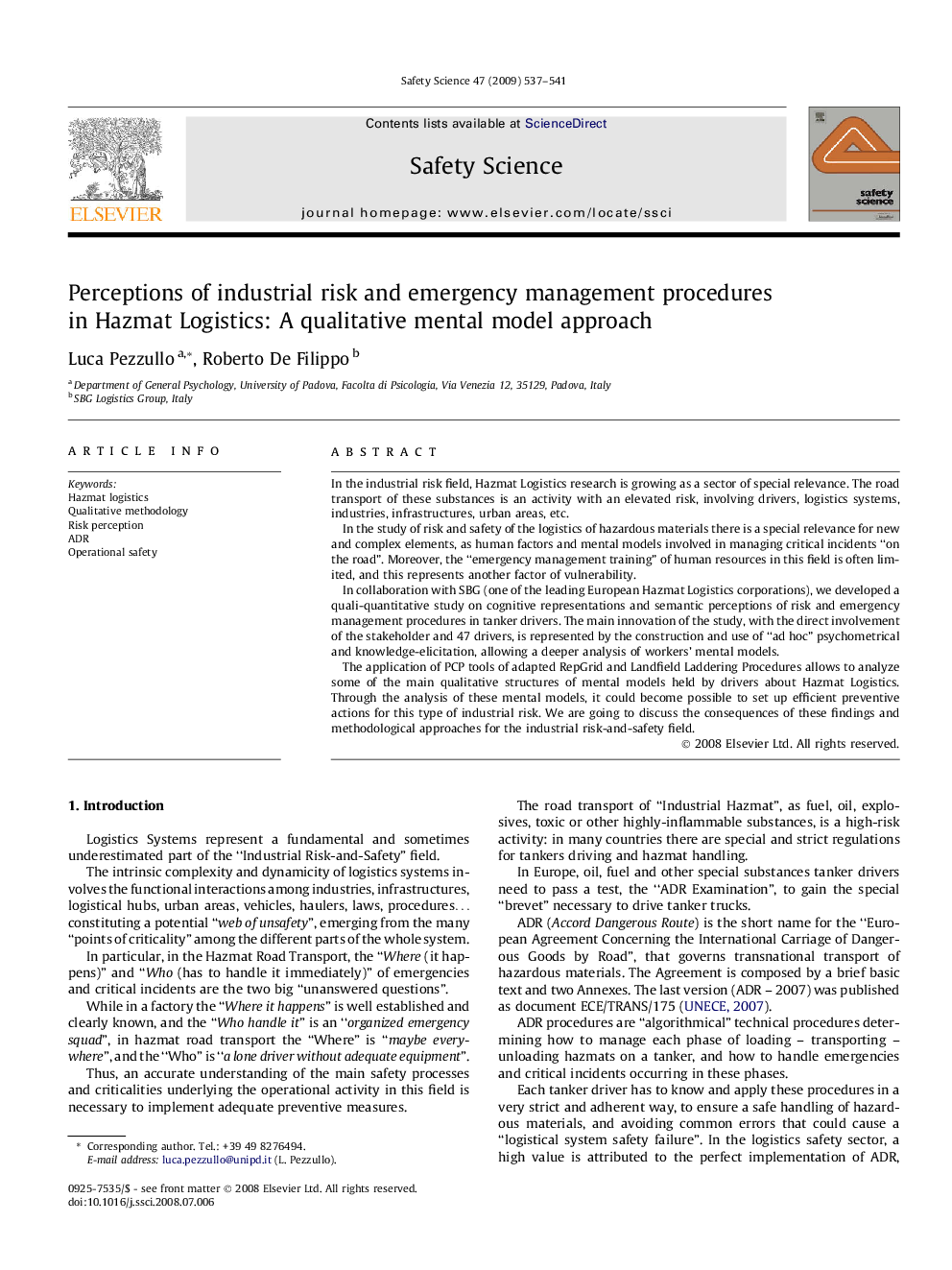| Article ID | Journal | Published Year | Pages | File Type |
|---|---|---|---|---|
| 590374 | Safety Science | 2009 | 5 Pages |
In the industrial risk field, Hazmat Logistics research is growing as a sector of special relevance. The road transport of these substances is an activity with an elevated risk, involving drivers, logistics systems, industries, infrastructures, urban areas, etc.In the study of risk and safety of the logistics of hazardous materials there is a special relevance for new and complex elements, as human factors and mental models involved in managing critical incidents ‘‘on the road”. Moreover, the ‘‘emergency management training” of human resources in this field is often limited, and this represents another factor of vulnerability.In collaboration with SBG (one of the leading European Hazmat Logistics corporations), we developed a quali-quantitative study on cognitive representations and semantic perceptions of risk and emergency management procedures in tanker drivers. The main innovation of the study, with the direct involvement of the stakeholder and 47 drivers, is represented by the construction and use of ‘‘ad hoc” psychometrical and knowledge-elicitation, allowing a deeper analysis of workers’ mental models.The application of PCP tools of adapted RepGrid and Landfield Laddering Procedures allows to analyze some of the main qualitative structures of mental models held by drivers about Hazmat Logistics. Through the analysis of these mental models, it could become possible to set up efficient preventive actions for this type of industrial risk. We are going to discuss the consequences of these findings and methodological approaches for the industrial risk-and-safety field.
